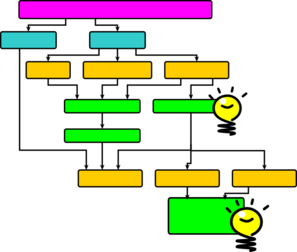Looking At The Big Picture
Research shows that those people we consider highly knowledgeable in their fields (experts, although I usually hesitate to use that word) do much more than simply retain and regurgitate the facts and formulas that pertain to their domain of expertise. They instead hang these facts and formulas on the big picture or big ideas.
Experts organize their knowledge around core concepts represented by high-level themes, big picture concepts or generalized big ideas. They don’t start with the details. They start with key concepts and ideas and in a hierarchical manner form the details around the larger concepts and ideas.
Use this same approach when learning something. Try to grasp the major concepts in an area of study. Don’t try to focus too much on the intricate details of a subject area right away. Be content at first to understand the primary concepts and only after these are understood satisfactorily should you attempt to learn the deeper and more complex specifics.
Think of the big ideas and concepts as the “outline” of the subject area. Only once the top level headings of an outline are in place should you further expand upon the outline with more specific details.
So what do you do if you have no idea where to start? What if you’re not even sure how to begin identifying the big, overarching ideas and concepts that pertain to a certain area of knowledge. I find introductory textbooks to be an excellent starting point. I’m not necessarily a big fan of our formal educational system relying so heavily on textbooks, but they do serve an extremely useful function, if well researched and written, of presenting to the reader some of the big ideas and concepts from which to start your self-education efforts. And the reading or deep scanning of a good introductory textbook is likely to give you a pretty good foundation for the rest of your study.
You can also find course syllabi online and they can serve the same purpose as a textbook in helping you identify the big picture items from which your self-study will emanate.
As Kio Starks says in her book, Don’t Go Back To School: A Handbook for Learning Anything:
“For linear learning, school use to be the only place to get access to a map that charted a tried and true path to learning a particular subject. These maps, such as syllabi and textbooks, were scarce, restricted resources. But school is now far from the only place to find thes kinds of maps. Open courseware, experimental learning platforms, and the generosity of individual teachers in sharing their work mean that school isn’t the only place to find a well traveled path anymore. They’re widely available without paying tuition. Good old fashioned textbooks can be found cheaply and easily online.”
